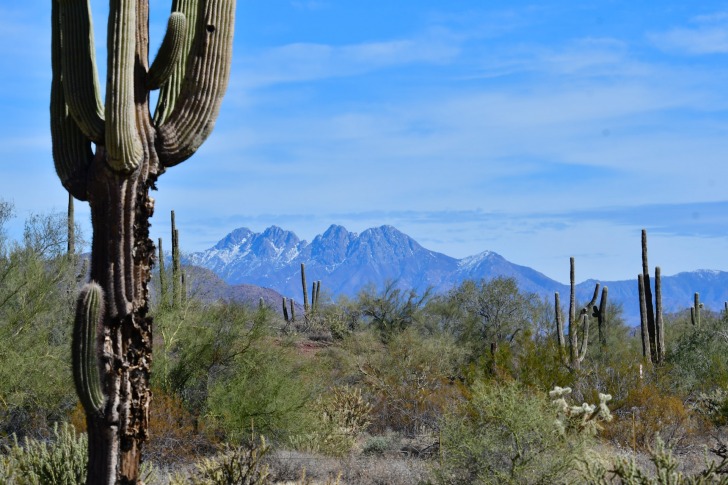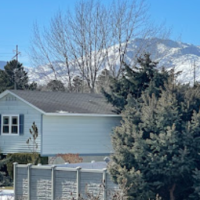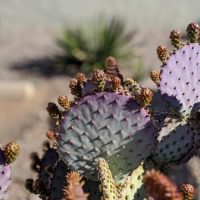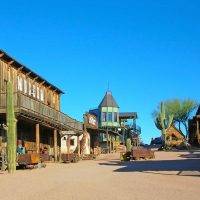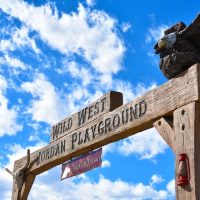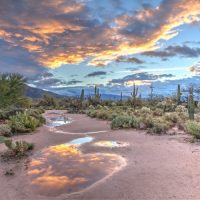Williamson Valley, Arizona, is located in Yavapai County, Arizona.
The state of Arizona has 447 cities. Williamson Valley is the 88th most populous of these cities, with 5,602 residents.
The average age of residents in the town is approximately 65 years old.
This place is rich in history, is home to a few custom-home communities, and offers beautiful views and a rural lifestyle.
Williamson Valley is an excellent escape from the hustle and bustle of other more metropolitan cities.
It’s more than just a city; it’s a lifestyle.
Contents
Pros of Living in Williamson Valley, Arizona
Williamson Valley is unlike any other traditional city or town.
It’s unique in what it offers its residents.
1. Williamson Valley is a lifestyle
The home prices in Williamson Valley are a little pricier, but you aren’t just buying a property; you are investing in a lifestyle.
The average home price in the US is $355,852, and the average home price in Williamson Valley is $744,000.
But home prices aside, there are some things in life that you cannot buy, and peace is one of them.
In Williamson Valley, you are away from the more metropolitan cities.
The pace of life here is much slower.
The area is characterized by custom-home communities such as Talking Rock and American Ranch.
And these communities come with all of the amenities you would expect from a place like this.
This investment is well worth it if you can afford this lifestyle.
There are some more moderately priced homes in the area.
Whether you invest in a more expensive or median-priced home, you will still enjoy the laid-back, rural lifestyle that Williamson Valley is known for.
Williamson Valley is an affluent area.
Many communities offer world-renowned golf courses and other excellent amenities, making Williamson Valley an excellent retirement destination.
The location offers stunning views as well.
2. Close to Prescott National Forest
Williamson Valley is approximately 33 miles away from Prescott National Park, or a 50-minute drive.
Prescott National Forest is one of the highest-rated tourist attractions in Arizona for bikers, hikers, and equestrians.
The park offers a range of trails for hikers to explore.
Some trails are easy to follow and provide spectacular views, while others are more challenging but worth the trip.
Several main parking areas feature a forest map that is easy to read and understand.
It’s not just about the hiking trails.
The wildlife you may encounter alone in the park makes this an ideal relaxation spot. Here you can expect to see deer, turkey, mule, elk, and tassel-eared squirrels.
But be careful; the area has many king snakes, mountain lions, javelina, bobcats, and pronghorn.
There are several different types of waterfowl in the area, such as bald eagles and ospreys.
And, if you are a camping fanatic, you will genuinely enjoy the recreational possibilities this park offers.
Another significant aspect of Williamson Valley is its location.
The location of Williamson Valley is in the middle of the state.
It’s relatively easy to get to any other point in Arizona from this location.
For example, Phoenix is approximately a two-hour drive from Williamson Valley.
You are well located if you need to go to a bigger city.
3. Climate
We’ve decided to list the climate as an advantage because it is mild compared to the rest of Arizona.
The valley has an average yearly temperature of between 27°F and 89°F.
The temperature here rarely drops below 18°F and rarely goes above 96°F.
The valley sees approximately 3.5 hot months throughout the year, from June through the middle of September, where the average temperature is around 81°F.
The hottest month here is July, with an average temperature of 81°F.
The cold season lasts from the end of November to the 1st of March, and the average temperature during this time of the year is 58°F.
This area’s climate is very mild and makes for beautiful sunsets and long, lazy walks at the beginning and end of summer.
The climate conditions have a lot to do with the area’s elevation, which is 5,053 ft.
That means it’s not too high or too low.
Williamson Valley summers are mild compared to Phoenix, and winters are favorable when compared to areas that experience colder winters in the state, such as Flagstaff.
4. Little to no traffic
Such little traffic is undoubtedly the best advantage of living in this town.
There is very little traffic.
Williamson Valley is rated as one of the best cities to live in regarding traffic.
The total size of the area is 150,6 km², and the entire population is 5,602.
A small population in a relatively small space means you won’t get caught in rush hour traffic on your commute to and from work.
You don’t have to deal with what most people in metropolitan cities deal with daily.
Your drive to work is smooth and pleasant.
The government conducted a 2017 study on Williamson Valley Road.
The study determined that the traffic from 2010 through 2040 would increase by about 2.47% per year.
That’s relatively low and indicates that traffic will remain reasonably slow in this area in the future.
One main contributing factor is that most residents need to travel outside of Williamson Valley to get to work.
One thing though, unusual animals crossing the roads pose some danger for driving.
5. Very low crime rate
Williamson Valley has some of the lowest crime rates in the US.
The average crime rate in the area is approximately 62% lower than the national average.
Violent crime in the area is 59% lower than the national average, and property crime is 63% lower than the national average.
Furthermore, the average crime rate in Williamson valley is 67% lower than the state average.
An estimated 158 violent crimes per 100,000 residents are reported yearly, and 725 property crimes per 100,000 residents.
The low crime rates make Williamson Valley an excellent place to raise a family.
6. The Job market
Williamson Valley offers excellent employment opportunities at companies such as Walmart, CVS Pharmacy, Bank of America, JP Morgan Chase, etc.
The job market looks pretty steady in this area, with projected growth rates exceeding the national average.
Williamson Valley sees 44.1% of projected job growth, while the national average is 33.5%.
While current job growth statistics are negative, they are also better than the national average.
The ten-year projected growth rate in Williamson Valley is more than double the national average, 14.5% compared to 6.3%, respectively.
The unemployment rate in Williamson is also lower than the national average.
Unemployment in Williamson is 56.% while the national average is 6.0%.
Furthermore, the average income per household in Williamson is $62,306.
This is slightly higher than the national average of $57,652.
Healthcare, social service, the retail industry, administration, food services, and waste management are the most prominent industries that employ residents in Williamson Valley.
7. Tax Rates
Williamson Valley enjoys a lower tax rate than the national average.
The tax rate is 6.3%, while the national average tax rate is 7.3%.
The sales tax may be higher than the national average, but the income tax rate in Williamson is lower than the national average.
The income tax rate is 3.4%, the sales tax is 6.4%, and the national average is 4.6% and 6.2%, respectively.
Tax rates significantly impact the cost of living in an area.
With lower tax rates, residents have more disposable income, which may be used towards a higher standard of living.
Cons of Living in Williamson Valley, Arizona
There are a few disadvantages to living in Williamson Valley, which may deter some from moving here.
This may be somewhat subjective, but we feel that living in Williamson Valley has more advantages than disadvantages.
1. High cost of living
The cost of living in Williamson Valley is much higher than in the rest of the United States.
As previously mentioned, the average home price in Williamson Valley is approximately $744,000.
Some areas offer housing at lower rates. Property prices push up the cost of living significantly.
Housing prices in this area are approximately 90% higher than the national average.
While there may be some relief in the form of taxes, this does little to mitigate the high cost of living in the area.
The cost of living in Williamson Valley is 32% higher than the national average.
But that’s not all. You can expect to pay at least 16% for your goods, services, and groceries in this area.
Utilities and transportation are just slightly lower than the national average.
Furthermore, the cost of living in Williamson is approximately 31% higher than the state average, and both sales and income tax in Arizona are higher than the national average.
2. Getting used to the elevation
As previously mentioned, Williamson Valley’s elevation is 5,053 ft.
The elevation may cause a milder climate overall, but it also means that the air is a bit thinner here, which you may need to get used to if you come from an area at a lower elevation.
Due to the elevation, you may feel a little more winded when you first move to Williamson Valley.
But that is perfectly normal.
In time you will adjust.
However, this is an essential piece of information if you enjoy the outdoors and doing things like walking, hiking, or running.
On a more positive note, the elevation also means that the air quality in Williamson Valley is better than in other lower-lying areas such as Phoenix.
These areas have to deal with smog due to more densely populated areas.
3. Dealing with snow
We have previously mentioned that climate may be an advantage.
However, Williamson Valley does experience at least 1.3 inches of snow annually.
It may not sound like a lot, but it does mean that the winters can be somewhat chilly for those not used to colder winters.
Therefore, it may take a while to get used to these weather conditions during the winter.
Pros and Cons of Living in Williamson Valley, AZ – Summary Table
| Pros of Living in Williamson Valley, Arizona | Cons of Living in Williamson Valley, Arizona |
|---|---|
| 1. Williamson Valley is a lifestyle | 1. High cost of living |
| 2. Close to Prescott National Forest | 2. Getting used to the elevation |
| 3. Climate | 3. Dealing with snow |
| 4. Little to no traffic | |
| 5. Very low crime rate | |
| 6. The Job market | |
| 7. Tax Rates |
Arizona Safety Overview
READ THE FULL REPORT: Arizona Safety Review
Safety Index:
- OVERALL RISK: LOW
- TRANSPORT & TAXIS RISK: LOW
- PICKPOCKETS RISK: MEDIUM
- NATURAL DISASTERS RISK: HIGH
- MUGGING RISK: MEDIUM
- TERRORISM RISK: LOW
- SCAMS RISK: LOW
- WOMEN TRAVELERS RISK: LOW
Frequently Asked Questions
What are the best tourist attractions in Williamson Valley?
As previously mentioned, Prescot National Forest is a must-see in Williamson Valley.
Other attractions include Arcosanti, Granite Creek Vineyards, and Courthouse Square.
What type of food is popular here?
Mexican food is very popular in the area.
What is Williamson Valley known for?
The area is known for its rich history and many beautiful communities and natural parks.
